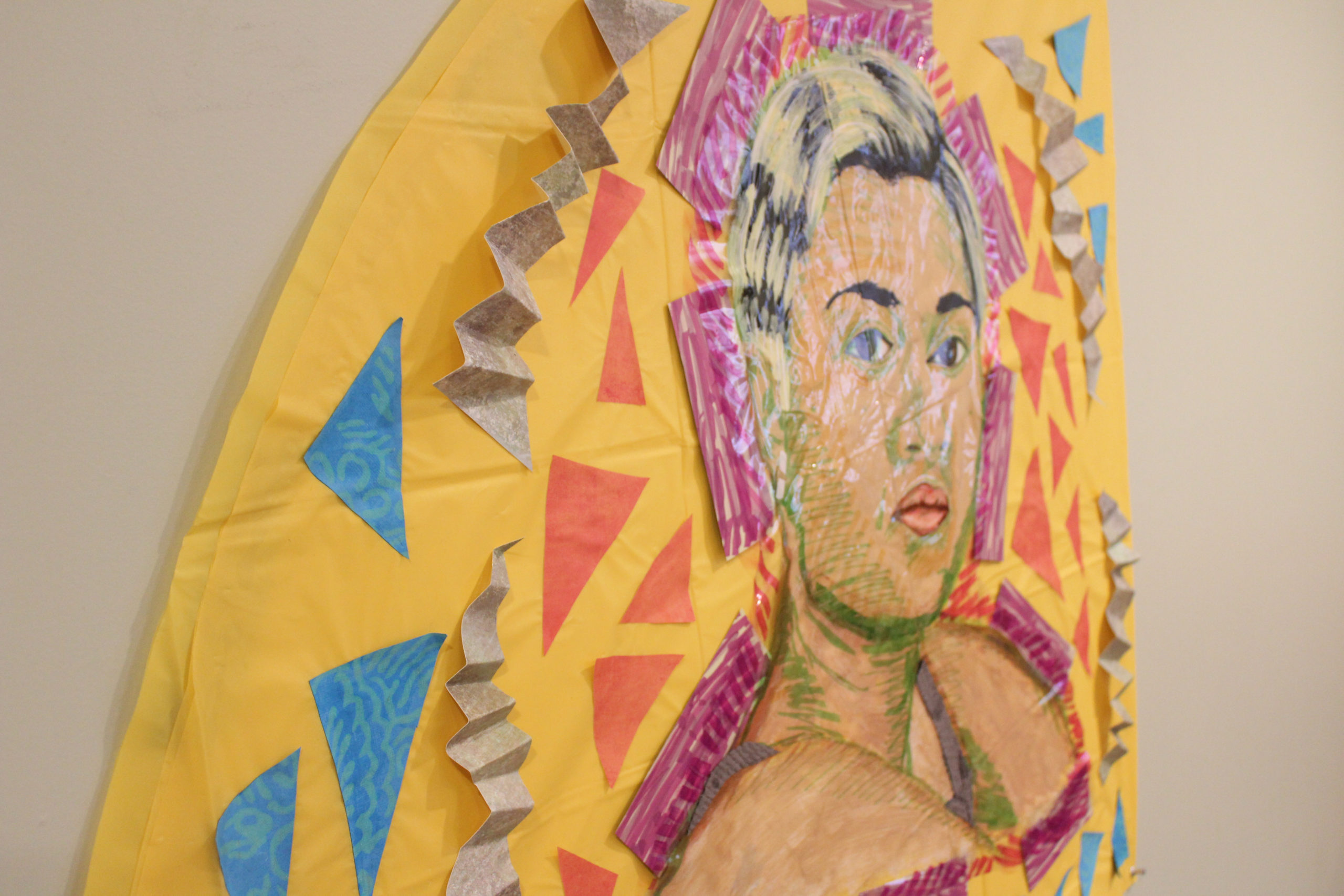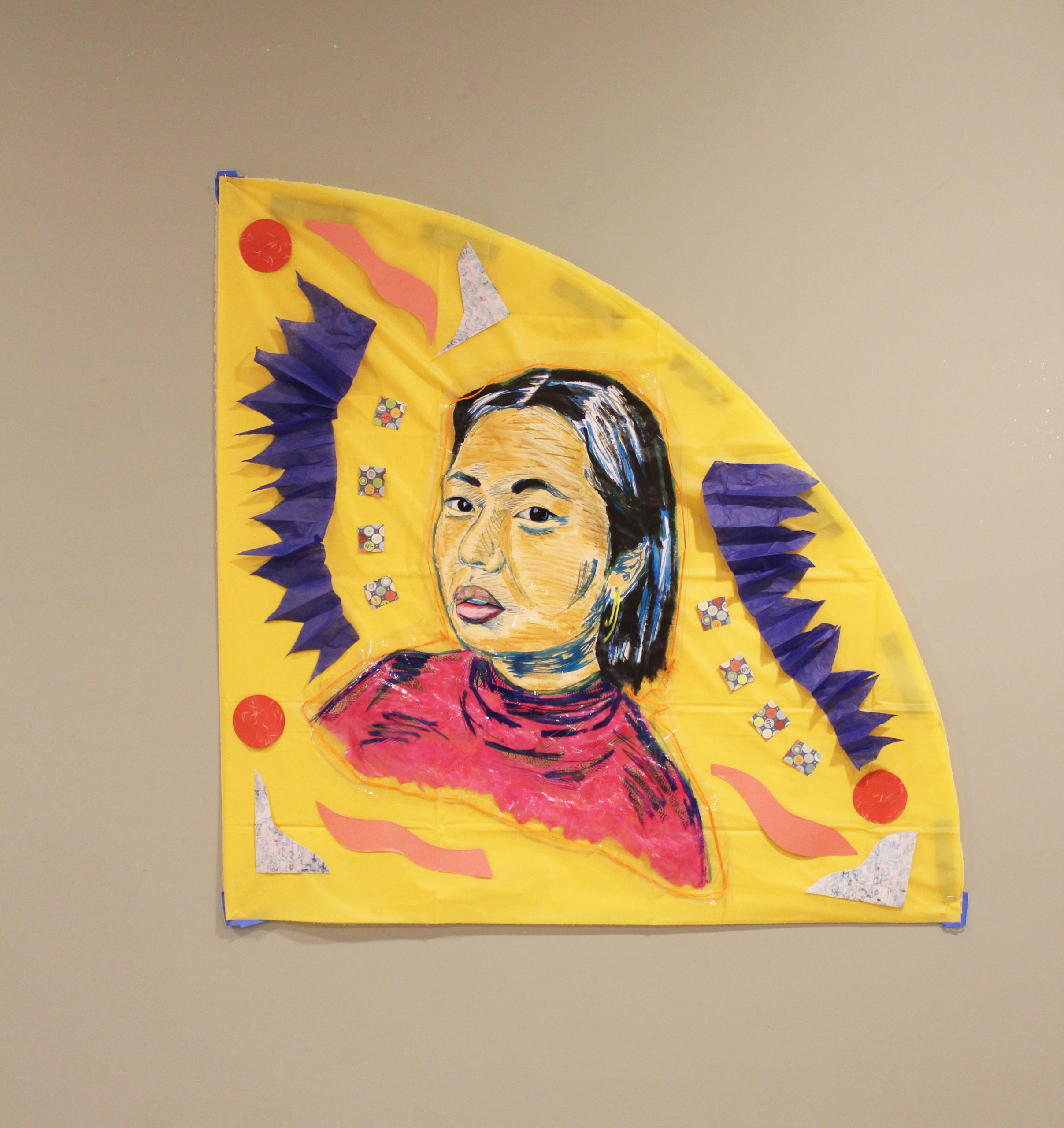 Photo courtesy of Chanel Thervil.
Photo courtesy of Chanel Thervil.  Photo courtesy of Chanel Thervil.
Photo courtesy of Chanel Thervil. Chanel Thervil (she/her) is a Haitian American artist based in Boston. Chanel discusses her artistic transition, mental health throughlines in her work, and critiques of art institutions with Lauren Pellerano Gomez (they/them). Edited by Christian Lin (he/him).
 Quarantine Self-Care Series, Productivity Reframed: Portrait of Katy (detail).
Quarantine Self-Care Series, Productivity Reframed: Portrait of Katy (detail).
LPG: Can you introduce yourself for people who are unfamiliar with you or your work?
CT: My name is Chanel Thervil. I’m a Haitian American artist and educator. 2020 has been particularly exciting for me in many ways, but one of the biggest ways is my transition from working full time at a nonprofit to now being self-employed. It’s been a transition that I didn’t know that I wanted until recently, and now that I’m here, I feel like it’s exactly where I was supposed to be!
LPG: Congratulations!
CT: Thank you! Coming from a Caribbean immigrant family, it was hard to envision being an artist as a practical career. For so long, I fought my calling to the arts. Even after having all these experiences with art in school and connecting to other artists, it still didn’t occur to me that it could be something that I could do and be successful at. Now that I am actually living that possibility, it’s like, oh, wait, I could have been doing this the whole time!
LPG: What spurred the transition?
CT: Traditional employment was always the goal. Especially post grad school because I had idealized that as the beacon of security and what I was “supposed to do”. But given the types of things that I care about as a human and as an artist, a 9 to 5 just was not working for me. That’s the byproduct of not seeing representation, right?
How do I know that I can be this thing if I’ve never seen anyone that looks like me be this thing? Being self employed empowers me to be very intentional about what I choose to do and who I choose to do it with in a way that I could not be if I was working for other people or institutions. This new chapter feels amazing.

Quarantine Self-Care Series, Soothing Pieces: Portrait of Billy.
LPG: Coming from an educational background, how do you incorporate that as part of your practice?
CT: My educator self is always going to be integrated into my work because that’s just a part of who I am. I love learning and helping other people learn too. I think I just get a rush from basking in the glow of light bulb moments when things start to connect and make sense.
My passion as an educator intrinsically influences a lot of things I do. I’m always cognizant of how institutions and academia can leave people out and aren’t always welcoming with their language. I’m trying to disrupt that through the ways that I share my practice by bringing people into my studio and talking about my work.
Especially during the pandemic , I’ve also been thinking more deeply about how I can share parts of my practice while also maintaining a sense of community with folks, even though I’m not physically seeing them.
I’ve been making videos where I’m explicitly saying “This is the story behind the person/place/thing that inspired this color and here’s how I did this technique.” That could be another great way for people to really absorb all the richness of what I’m doing in my practice in a way that doesn’t feel formal or scholarly in an uninviting way.
LPG: You mentioned the challenge of maintaining a sense of community without that physical space, what would be an alternative for you?
CT: Visuals! Visuals and language together, that’s like that’s the power sandwich. I’ve been learning more about using social media as a tool for education, especially after George Floyd died. I mean, the way that Instagram has been used for organizing, sharing information and resources for acknowledging and dismantling white supremacy is incredible. There are just so many great ways that social media in particular has leveled up as a casual, accessible tool for sharing knowledge.

Quarantine Self-Care Series, Flow Into Stillness: Portrait of Guy (detail).
LPG: At the same time, social media can be a double-edged sword sometimes and overwhelming with just the vast amount of information available.
CT: It’s definitely a double-edged sword. Too much of anything can be bad for you. There have been many instances where I’ve had to take social media breaks. Especially with the circulation video and images of all these murders of black people that keep being shared widely. That is not something I want to continue taking in because it’s painful, and can add to the dehumanization of these people and black people who are still alive. Ultimately, what keeps me sane amidst all of that is the work I put in offline to make myself whole and maintain my mental health, like going to therapy. Figuring out what helps you maintain your mental health offline is important because that’s what you need as the armor to protect yourself from getting overwhelmed by social media.
What I’ve been noticing is that people have this misconception that because my social media presence is jolly and my work is joyful, that it’s not still full of labor. And that’s a misconception I’d like to dispel. I’m human. I get tired, and it’s a hell of a lot of work to do all of this and make it look like it’s not difficult. That offline self-care journey is the foundation for my sanity!
That’s part of why I started the Quarantine Self Care Series. To showcase how other creatives of color are navigating these themes given the effects of the pandemic. I know that the words “mental health” can be triggers for people, so there’s nowhere where I say that.
I put “self-care” at the forefront and instead, ask “how have you been caring for yourself recently?” That’s where it starts and ultimately that’s the goal. I want people to think about ways they can be kinder to themselves, ways they can do things that feel replenishing, and ways they can do things that bring them joy, because all of those things are part of mental health maintenance and that language is more accessible.
LPG: How has social media affected your craft as an artist and in the creation process?
CT: If we’re really being technical, I’m a painter. That’s what I am. But it’s not enough for me to sit in my studio and make beautiful paintings. I need to know how to document that work, talk about that work and write about that work. As an educator, I need to know how to teach the nuances of all those things. If I want to take it a step further, I need to know how to market all of that. Social media is the tool that helps me put all of that thinking and doing on display in a way that feels casual and fun.
One element of the Quarantine Self Care Series has been doing Portraits & Pajamas Live Events on IG TV. For these events another creative of color and I have deep conversations about art, mental health and systematic oppression while in pajamas. It gets interactive as well because we do a Q & A so people watching can chime in with comments and ask questions. It’s casual but still substantive. That is just as powerful, important and necessary as peer reviewed journals from Ivy tower institutions on these issues that use intense vocabulary that the higher echelon of society uses to dissect these topics. We’re human beings. We’re living this shit. It’s OK to crack a joke. It’s OK to smile. It’s OK to be in pajamas talking about these issues, using language that feels casual, because we’re experiencing these things in the now and life is not going to be written down like a thesis. That formality aligns with a dissonance that I haven’t been interested in subscribing to in this moment.

Quarantine Self-Care Series, Tomorrow is Another Chance: Portrait of Mel.
LPG: Can you unpack what that issue is in certain arts institutions?
CT: I think where academia loses a lot of people is the language that systematically shuts out a lot of communities, particularly communities of color with low income backgrounds. I remember the culture shock that I had when I first started undergrad of like, whoa, nobody talks the way that I talk, and I’m smart. I can understand things, but if you’re using all these giant vocabulary words in ways that don’t feel organic to how I speak, how am I supposed to tap into this? And I’m privileged enough to be someone who’s first language is English. What if that wasn’t the case? I saw that as another perpetuation of all these systems of inequities and oppression that keep people from having access to things that are going to enrich their lives.
LPG: What’s something you would change in the Boston Arts community going into the future?
CT: As a young black woman on this landscape I have seen that If there’s not enough white people or institutions cosigning what you’re doing, it isn’t seen as substantive or valid or innovative. So many creatives of color, of all ages have been and currently are being overlooked and it doesn’t have to be that way. There’s enough resources and opportunity for all of us.
I think that is the heart of the change that I would like to see from Boston’s art community: not needing a cosigner validation from white institutions for creatives of color, and black artists in particular to start getting the funding they deserve to make their work and the notoriety they deserve for the great things they’re doing.
I hope to see more acceptance for more kinds of people and more kinds of artwork being heralded as a great.